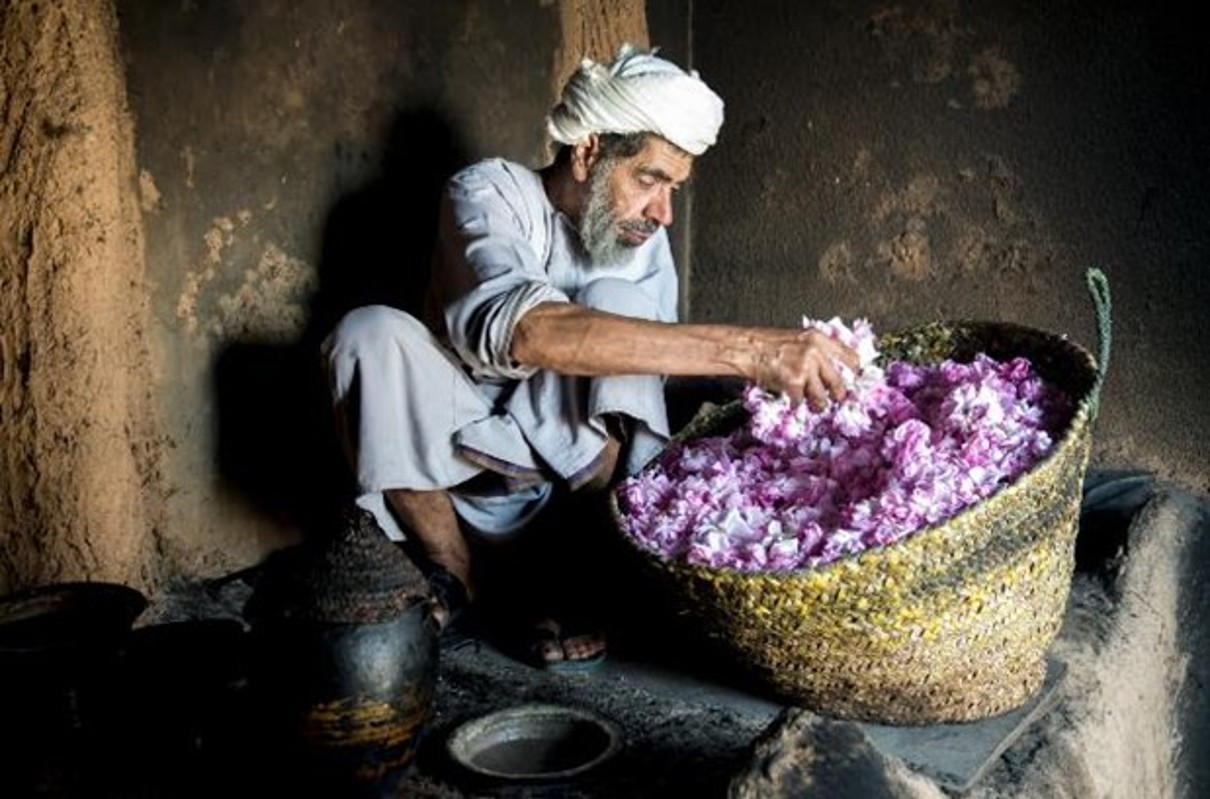Page content
An insight into Omani culture and encounters with local people
Harvesting pomegranates, dates and roses near Jabal Al Akhdar
Many little villages lie scattered among the hills, promising fruitful encounters with the locals. Amid the sparse landscape mountain water flows along stone water channels into the gardens. On hot days pomegranates sold by local tribespeople offer a welcome refreshment. In spring travellers can watch the laborious process of harvesting of sweet-scented Damask roses. On the way down from the highest mountains, in the oasis that is Birkat Al Mouz, honey-sweet dates await harvesting. Encounters with local Omanis, well known for their cordiality, perfectly round off the experience.
A look behind the scenes: the Aflaj irrigation systems
Thousands of channels wind their way across a mostly arid desert landscape. Many are more than ten kilometres long, running above and below ground through tunnels and along viaducts. Artfully designed and refined through years of experience, they work by gravity alone with no hydraulic assistance. They are works of engineering genius, which is handed down locally from generation to generation, and they have existed in the Sultanate since around 2,500 BC. The Aflaj irrigation systems are among the most sophisticated in the world. In order to find out how they work and what role the water master actually plays they are most certainly worth a visit.
Hustle and bustle in the oasis city of Nizwa
The time-tested irrigation system means there is lush greenery in what is mostly a sparse landscape, including in the oasis city of Nizwa, which is surrounded by mountains on every side. This is a lively marketplace with a long history and tradition, where even today local sheikhs rule over the locals’ fortunes in this rural area. For those attracted to the hustle and bustle, a visit to the historical souq or a Friday morning excursion to the oasis city’s local cattle market is worthwhile.
Elaborately decorated front doors
At first sight many of the houses in a typical Omani village may seem inconspicuous. However, one aspect immediately catches the eye: nearly every traditional building features an elaborately decorated front door, usually in striking colours. A walk through town streets quickly becomes an experience and provides a good opportunity to take a closer look at architectural and design facets in the Sultanate. Oman’s fortresses and palaces also feature magnificent entrances in wood or metal and sometimes both.
Coffee – the national beverage
The Arabic word for coffee is ’qahwa’, which in Oman is synonymous with a ceremonial welcome that includes Omani coffee, dates, fresh fruit, sweets and pastries. The beverage consists of Arabic coffee spiced with cardamom and sometimes cloves. It is sweet and strong and served in small cups without handles. Omanis drink qahwa several times a day, supply neighbours with freshly made pots and offer it to their guests of course. A coffee ceremony follows its own rules. For example, a guest must shake their cup between forefinger and thumb to show they no longer want coffee, otherwise hospitality dictates it will always be refilled.
On the trail of frankincense in Dhofar
In the southernmost part of Oman lie the origins of incense. UNESCO has declared the dry valley of the Wadi Dawkah, where more than 5,000 Arabic frankincense (Boswellia sacra) trees grow, a World Cultural Heritage Site along with other sites such as the ancient ports on the legendary Dhofar frankincense route. Visitors to the region can find out how harvesting takes place of the precious resin that the three kings presented to the baby Jesus along with myrrh and gold. Oman’s Royal al-Hojari frankincense, which glows green and is almost transparent, is the most expensive worldwide. Its production accounts for only five per cent of the country’s total harvest.
In Oman, travellers in search of premium accommodation are spoilt for choice. Whether they opt for a Shangri-La, Kempinski, Anantara, Six Senses, The Chedi or Alila hotel – several premium international hotel brands are represented in the Sultanate. Together with the hospitality for which Omanis are well known, they offer all the comforts anyone could wish for. Local hotel brands such as SAMA Resorts and owner-run lodgings offer especially authentic accommodation.
The national carrier Oman Air flies non-stop to the capital Muscat five times a week from Munich and daily from Frankfurt. Numerous other airlines also offer flights. www.omanair.com
For additional information on the Official Host Country of ITB Berlin 2024 please visit www.experienceoman.om .




_xxxldesk43.jpg)
_xxxldesk43.jpg)
_xxxldesk43.jpg)